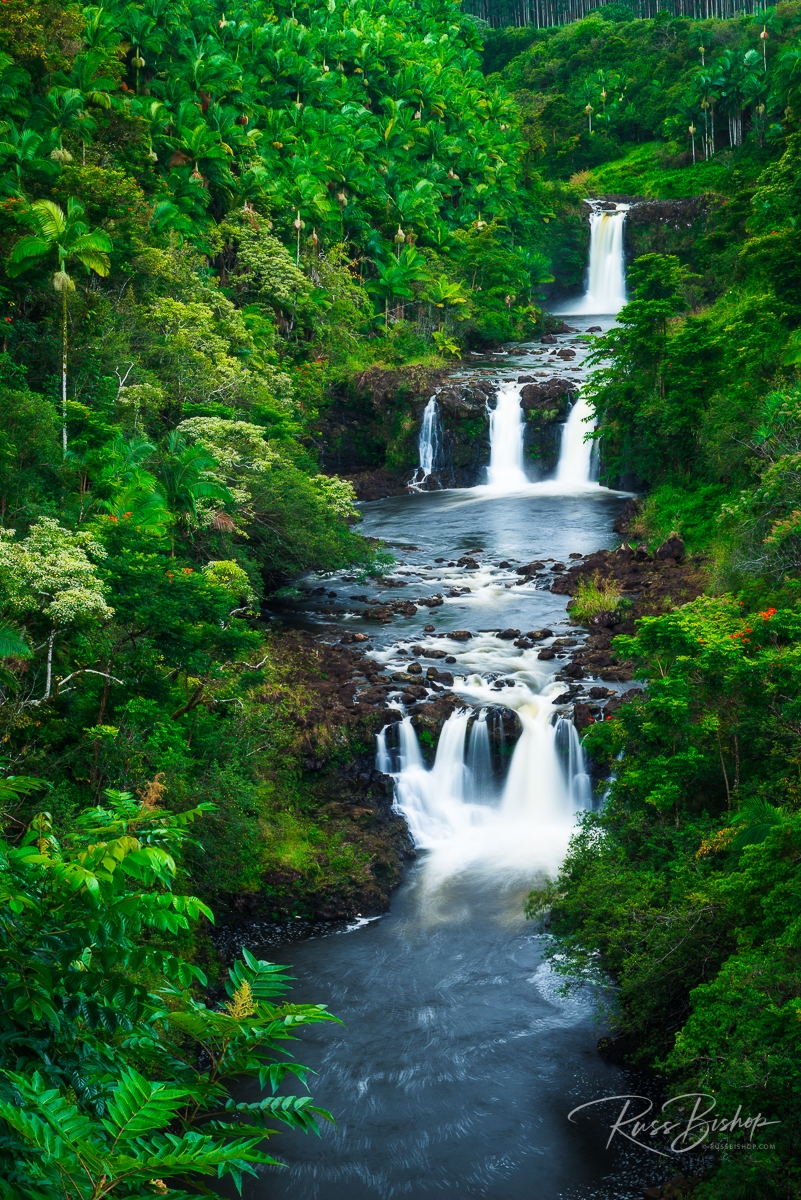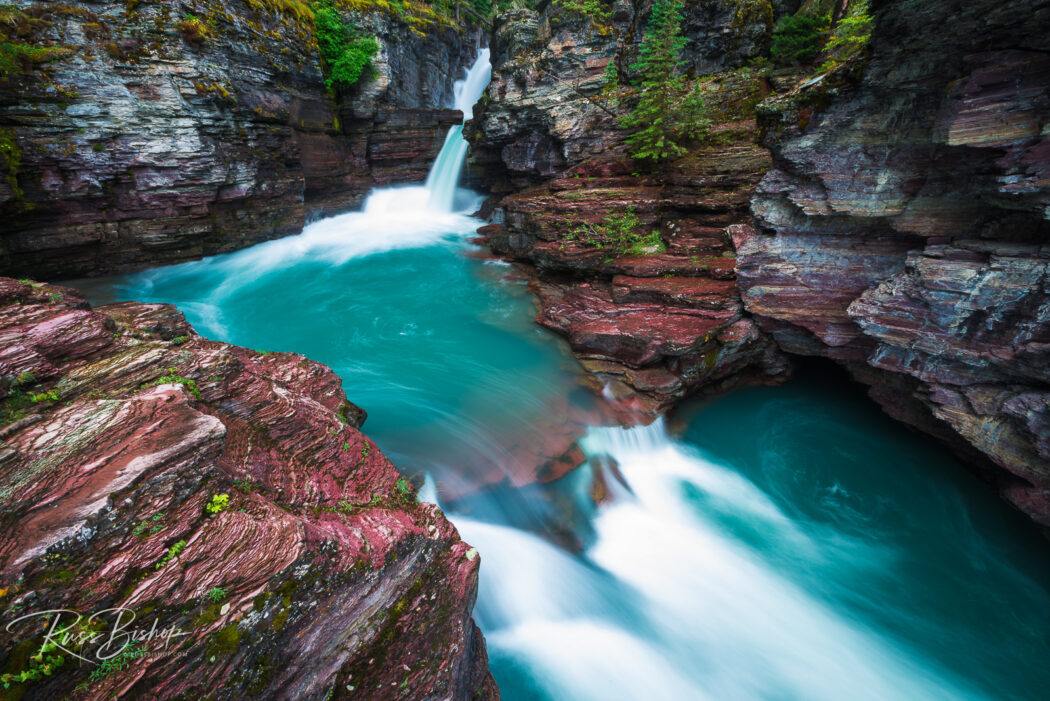
The Big Island of Hawaii is well-known for its active volcano, black sand beaches, and magical Kona sunsets, and that’s more than enough reason to visit this island paradise. But what many may not realize is that the eastern side of the island is a lush tropical landscape of cascading waterfalls and jungle-lined valleys in a primordial setting.
Traveling north from Hilo on the old Mamalahoa Highway is a journey back in time. Passing countless sugar cane fields, the primary industry here during the last century, the landscape soon enters the dense jungle as the road winds along the rugged Hamakua Coast. With constant views of the Pacific on the right, the highway passes countless verdant chasms lined with an amazing variety of plants and trees that fill every available space with green. Needless to say, you soon find yourself looking for every available pull-out.
Akaka Falls State Park is one of the highlights of the coast. A short nature trail leads through giant bamboo forests and tropical cascades before arriving at its namesake waterfall. Further north, just before the highway turns west towards the town of Waimea, a spur road leads through the sleepy hamlet of Honoka’a to the spectacular Waipio Valley. The overlook at the end of the main road provides stunning views of this valley of the kings and the dramatic cliffs of the north coast, but traveling into the valley down the 25% grade (reported to be the steepest in the US) requires several hours and a guide or 4-wheel drive vehicle.
Boasting 4 out of the 5 major climate zones in the world, and 8 out of 13 of the sub-zones, the Big Isle really does have it all! Unlike the other Islands, which require less travel time, it takes a bit of planning to fully experience the largest of the Hawaiian Islands – but this is one part you don’t want to miss.
©Russ Bishop/All Rights Reserved


